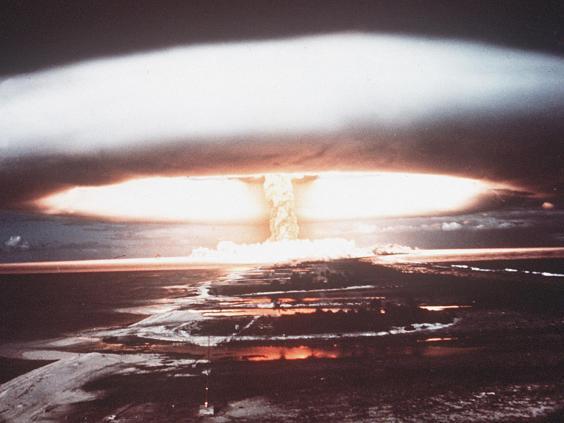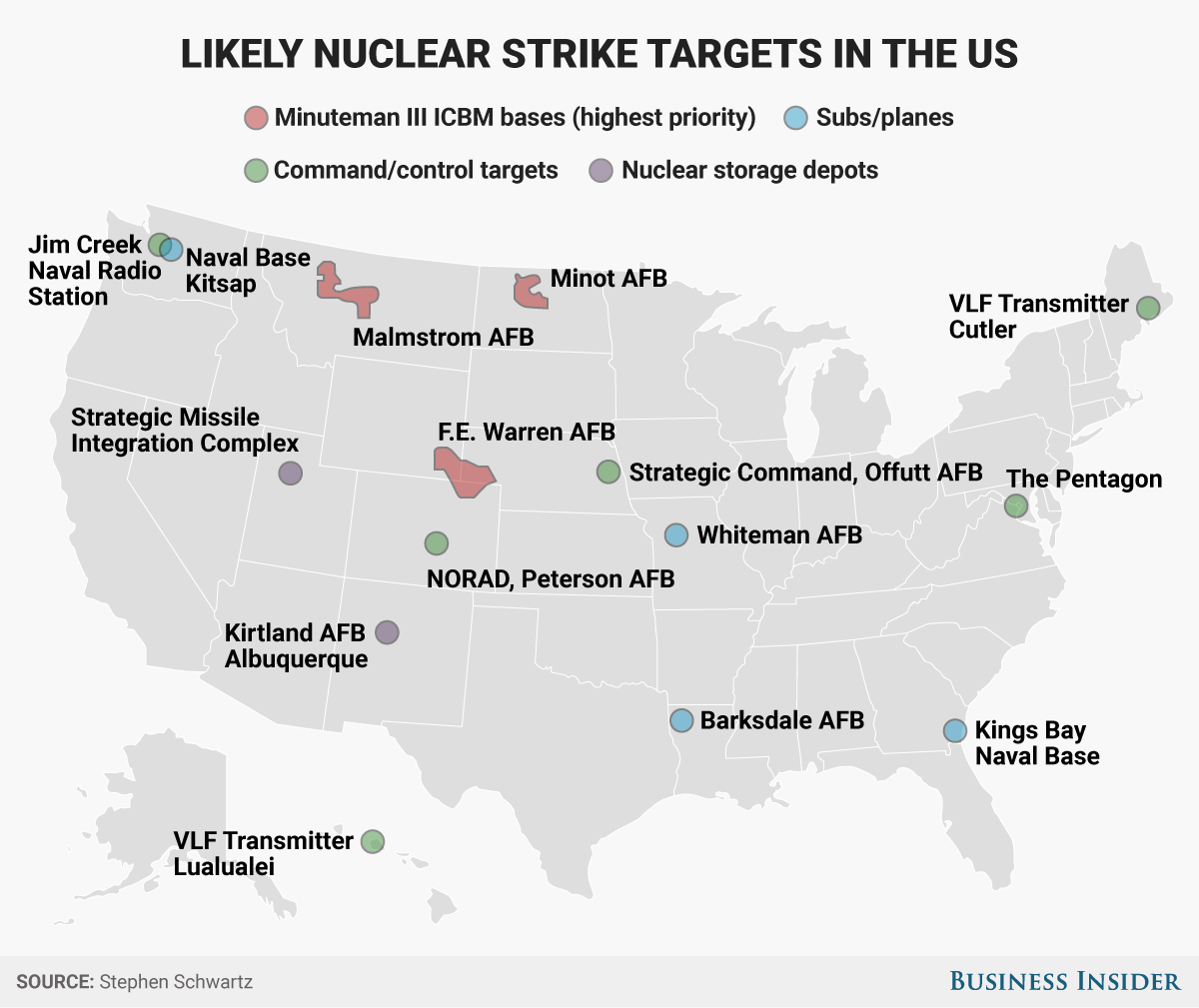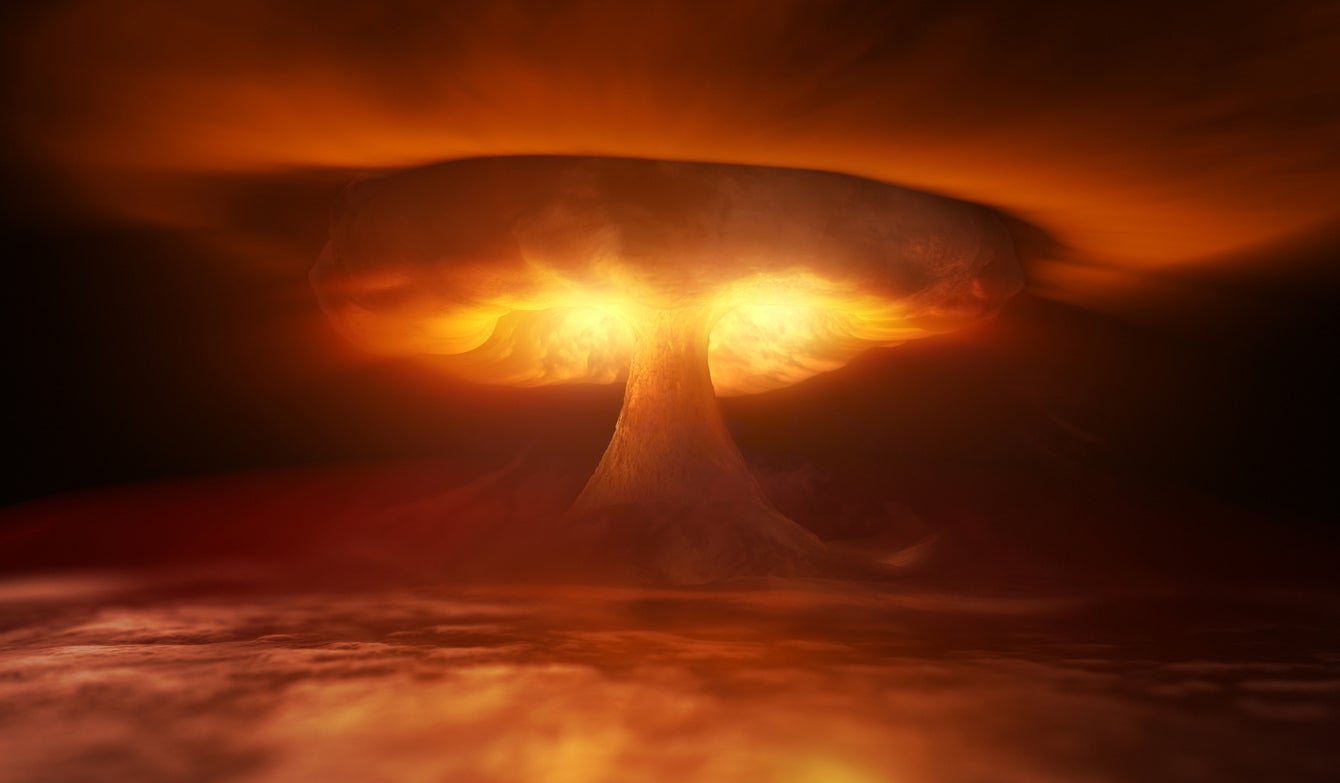Here are the areas in the US most likely to be struck in a nuclear attack by Russia

Your support helps us to tell the story
From reproductive rights to climate change to Big Tech, The Independent is on the ground when the story is developing. Whether it's investigating the financials of Elon Musk's pro-Trump PAC or producing our latest documentary, 'The A Word', which shines a light on the American women fighting for reproductive rights, we know how important it is to parse out the facts from the messaging.
At such a critical moment in US history, we need reporters on the ground. Your donation allows us to keep sending journalists to speak to both sides of the story.
The Independent is trusted by Americans across the entire political spectrum. And unlike many other quality news outlets, we choose not to lock Americans out of our reporting and analysis with paywalls. We believe quality journalism should be available to everyone, paid for by those who can afford it.
Your support makes all the difference.Since the Cold War, the US and Russia have drawn up plans on how to best wage nuclear war against each other — but while large population centers with huge cultural impact may seem like obvious choices, a smarter nuclear attack would focus on countering the enemy's nuclear forces.
So while people in New York City or Los Angeles may see themselves as being in the center of the world, in terms of nuclear-target priorities, they're not as important as places in states like North Dakota or Montana.
Stephen Schwartz, the author of "Atomic Audit: The Costs and Consequences of US Nuclear Weapons Since 1940," says that after the Cold War, the US and Russia shifted from targeting each other's most populous cities to targeting each other's nuclear stockpiles.
This map shows the essential points Russia would have to attack to wipe out the US's nuclear forces, according to Schwartz:

This map represents targets for an all-out attack on the US's fixed nuclear infrastructure, weapons, and command and control centers — but even a massive strike like this wouldn't guarantee anything.
"It's exceedingly unlikely that such an attack would be fully successful," Schwartz told Business Insider. "There's an enormous amount of variables in pulling off an attack like this flawlessly, and it would have to be flawless. If even a handful of weapons escape, the stuff you missed will be coming back at you."
Even if every single US intercontinental ballistic missile silo, stockpiled nuclear weapon, and nuclear-capable bomber were flattened, US nuclear submarines could — and would — retaliate.
According to Schwartz, at any given time, the US has four to five nuclear-armed submarines "on hard alert, in their patrol areas, awaiting orders for launch." Even high-ranking officials in the US military don't know where the silent submarines are, and there's no way Russia could chase them all down before they fired back, which Schwartz said could be done in as little as five to 15 minutes.
But even a strike on a relatively sparsely populated area could lead to death and destruction across the US, depending on how the wind blew. That's because of fallout.

The US has strategically positioned the bulk of its nuclear forces, which double as nuclear targets, far from population centers. But if you happen to live next to an ICBM silo, fear not.
There's a "0.0 percent chance" that Russia could hope to survive an act of nuclear aggression against the US, according to Schwartz.
So while we all live under a nuclear "sword of Damocles," Schwartz said, people in big cities like New York and Los Angeles most likely shouldn't worry about being struck by a nuclear weapon.
• Inside the incredibly narrow Clerkenwell 'Wee House' that costs £3,000 a month to rent
• Thousands of people lied about being at the Manchester Attack to get free tickets to Sunday's benefit concert
• These are the 9 highest-paid Victoria's Secret models
Read the original article on Business Insider UK. © 2015. Follow Business Insider UK on Twitter.
Join our commenting forum
Join thought-provoking conversations, follow other Independent readers and see their replies
Comments